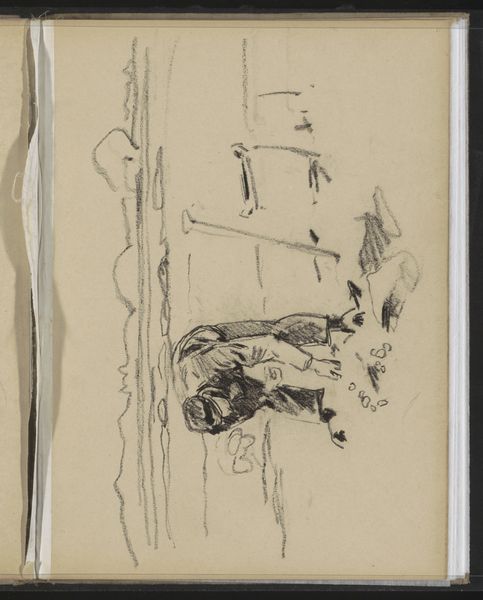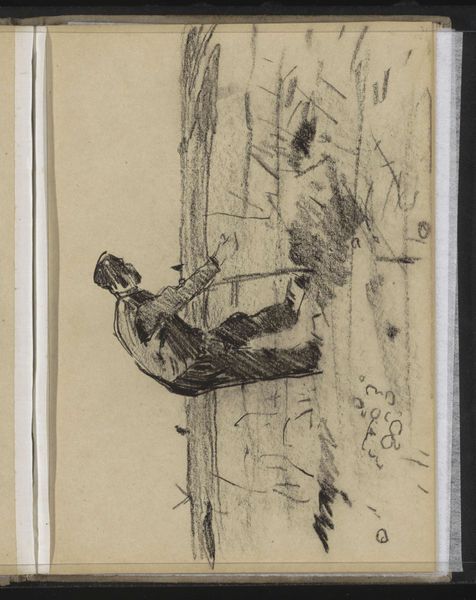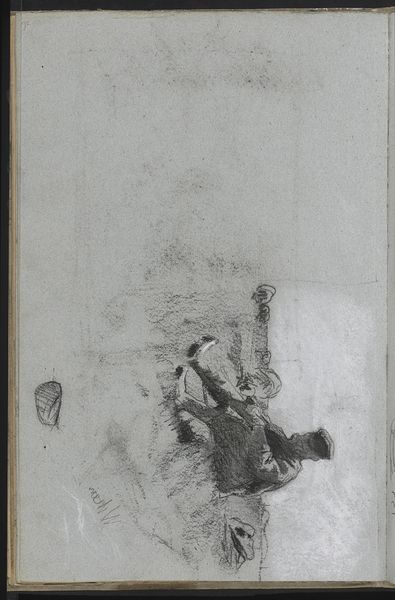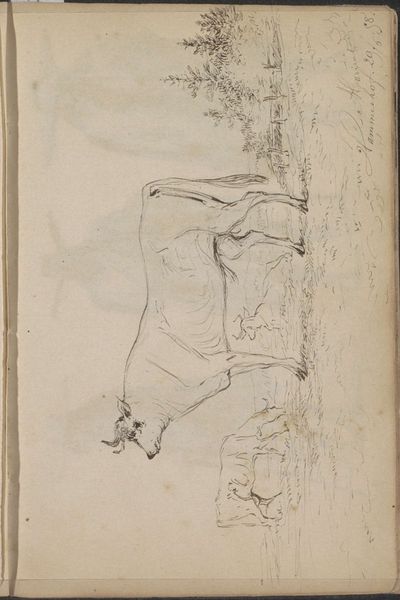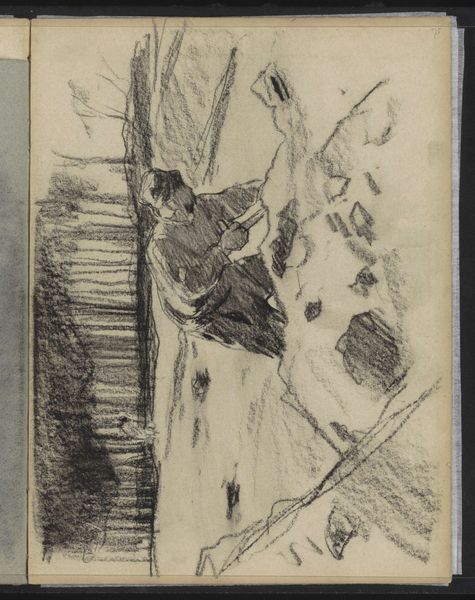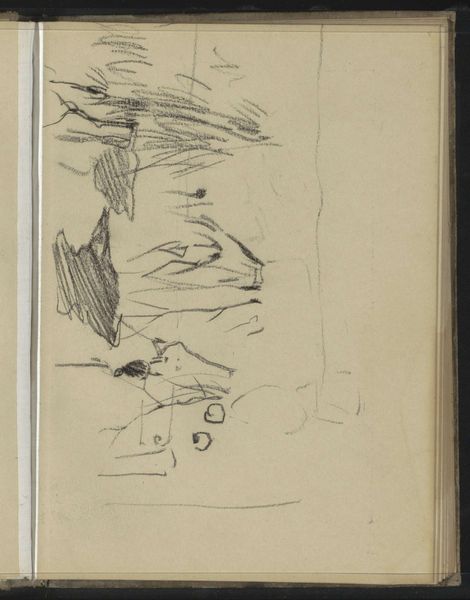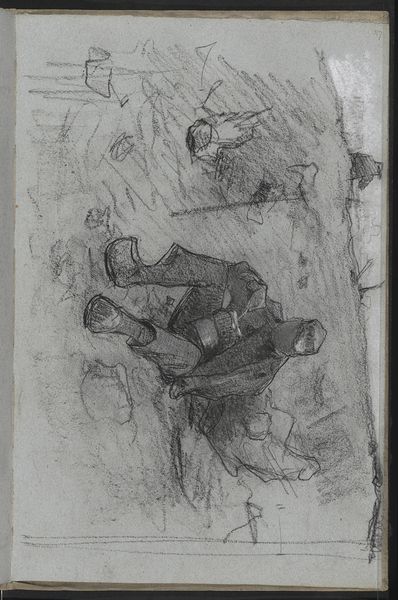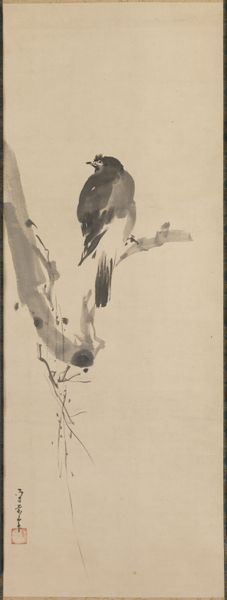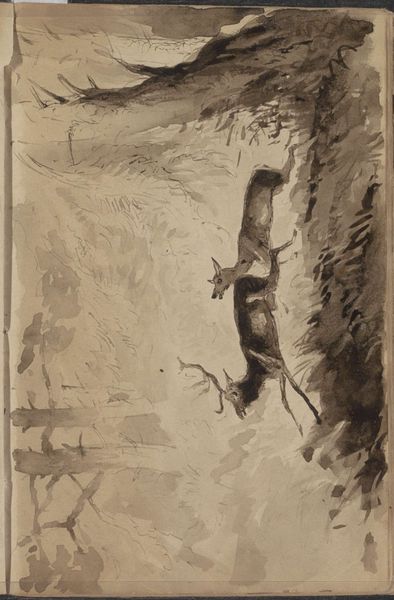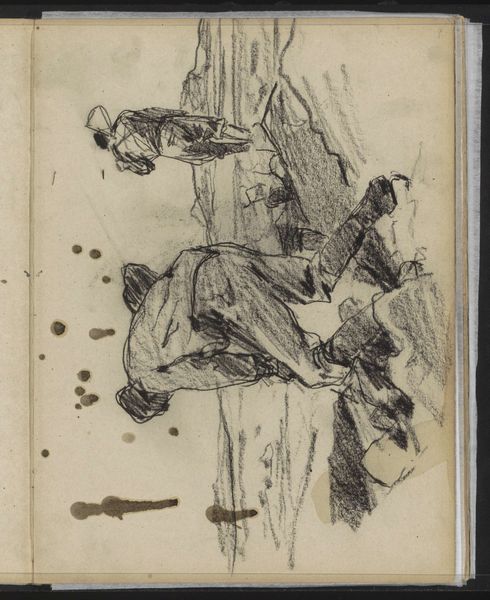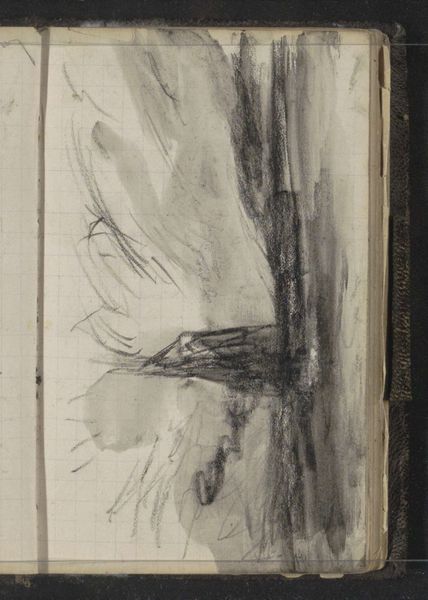
Copyright: Rijks Museum: Open Domain
Curator: This is "Boer aan het werk op het land," or "Farmer Working the Land," by Willem Witsen, likely created between 1893 and 1897. It's currently held here at the Rijksmuseum. We know it combines graphite and pen. Editor: My first impression is that this is quick, raw. A snapshot of labor more than a polished statement. The neutral colors add to this feeling – like looking through an old photo. Curator: Exactly. I'd call your attention to how Witsen employs plein-air techniques in his sketches, documenting the realities of agricultural labor and the landscapes in which it took place, and specifically this work feels very immediate. You see that translated to this pen and graphite application and the choices of what he included as being central in his composition. The artist zeroes in on that one single figure to describe this person’s whole life, almost. Editor: There's something beautiful in the stoop of the figure, wouldn’t you say? This drawing evokes such empathy— a feeling of honoring their back-breaking work. I get that sense of solidarity or maybe...shared humanity? And Witsen almost gets out of the way, lets that single pose speak for volumes. Curator: Consider the socio-economic context of Witsen's work, here. Rural subjects reflect the period's shifting economic landscape, where agricultural labor remained central while urbanization gained pace, impacting working classes through both exploitation and progress. So these drawings capture a record, perhaps in an unvarnished form. They help in a deeper reflection of the society of this age. Editor: It strikes me that this humble farmer probably never imagined his likeness displayed in the Rijksmuseum. I'd venture to imagine him a figure rendered, if I may, as both eternal, and immediately familiar. Curator: In essence, Witsen prompts considerations of our consumption, production, and those often invisible human labors underlying it all. Editor: Absolutely, and that's the profound thing isn’t it? We are given permission through works such as this, that force both our inner, and outer gazes, to reflect in meaningful dialogue.
Comments
No comments
Be the first to comment and join the conversation on the ultimate creative platform.
